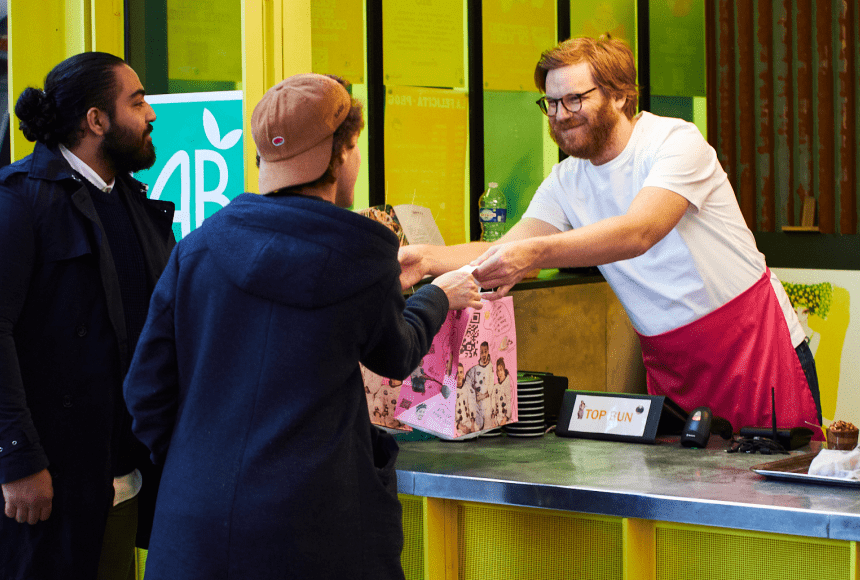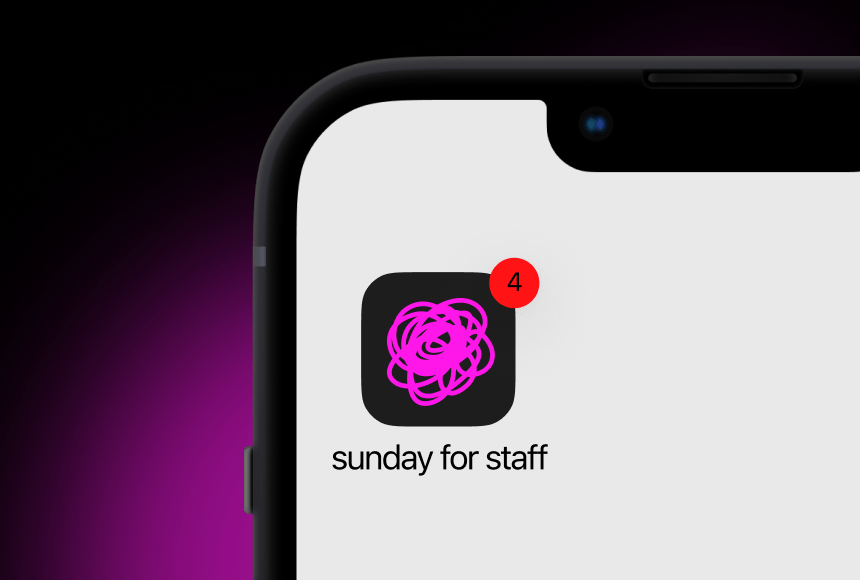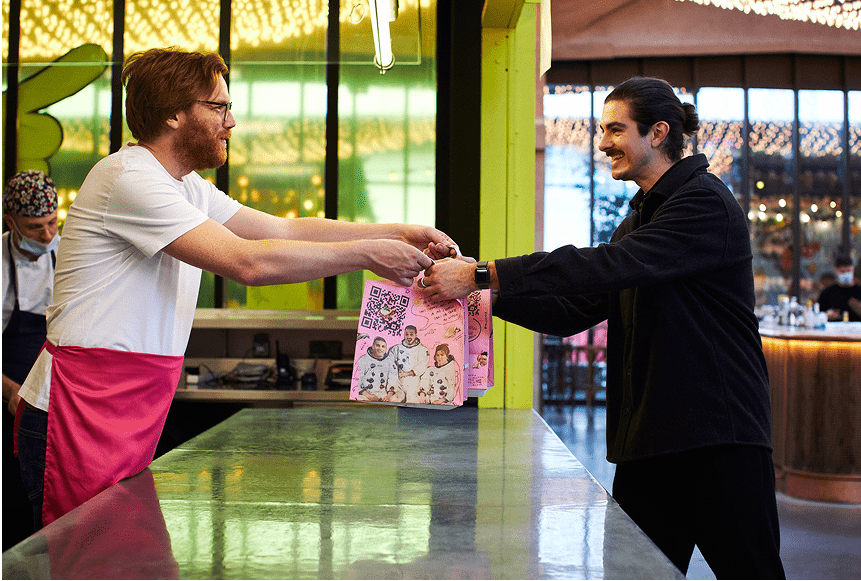
Mastering Click & Collect: Empowering Independent Restaurants for Success
Understanding the Click & Collect Phenomenon
Click & Collect—sometimes called “order online, pick up in person”—has become a major trend across the UK restaurant scene. It’s a straightforward concept: customers browse your menu online, place their order, and collect it from your establishment at a scheduled time. Think of it as a streamlined takeaway service that keeps hungry patrons out of the queue and your staff focused on the food.
Recent data published by Statista highlights the meteoric rise of Click & Collect in retail and hospitality, with many independent operators joining larger chains in adopting contactless collection models. While home delivery has attracted most of the headlines, Click & Collect continues to gain traction because it offers diners an easy way to support local restaurants without incurring third-party delivery commissions. For restaurateurs with tight budgets, it’s a cost-effective path to growing revenue—and a great way to expand brand loyalty.
The pandemic undoubtedly turbocharged this shift. But even as dining rooms have reopened, customers still appreciate convenience. For busy parents heading home from school runs or workers with limited lunch breaks, being able to swing by and pick up a mouth-watering meal—hot and ready to go—is immensely appealing.
Why Independent Restaurants Should Embrace Click & Collect
You might wonder: why invest time and resources developing a Click & Collect service? For many independent restaurants, this channel has the capacity to unlock new revenue streams while nurturing long-term customer loyalty. Here are a few reasons Click & Collect can be a game-changer :
- Growing customer demand: Diners in the UK increasingly expect a convenient digital ordering option. Meeting this expectation helps you stay on par with bigger industry players.
- Lower overheads and commissions: Compared to outsourced delivery, Click & Collect often avoids high third-party fees while giving you more control over your brand presentation.
- Operational efficiency: By channelling orders through a well-structured system, you can reduce phone calls and streamline front-of-house staffing.
- Health and safety benefits: Minimising customer contact in congested dine-in areas helps reassure guests who want a quick in-and-out experience.
- Direct relationship with customers: You’ll maintain direct control over your customer data and be able to offer personalised promotions to build loyalty.
For smaller, independent eateries, adopting Click & Collect needn’t be a complex policy decision. A well-structured plan and a straightforward tech setup can let you tap into this market and hold your ground against better-known rivals.
Setting Up a Reliable Click & Collect System
Let’s dive into the nuts and bolts of making Click & Collect both simple and robust. Before any marketing campaigns or redesign of your dining space, you’ll need the technical foundation. Here’s how to approach it:
1) Choose an Online Ordering Platform
The core element is your online ordering platform. This is where your menu lives and where customers place orders. You could integrate directly through your website, use a third-party ordering tool, or even set up a system via popular food platforms. For maximum control and cost savings, opt for a dedicated platform that integrates seamlessly into your existing point-of-sale solution.
2) Update Your Menu for Digital Ordering
Transitioning your menu from print to digital is more than just copying and pasting text. A successful digital menu should:
- Be easy to read: Keep descriptions concise but appetising.
- Highlight key items: Include mouth-watering photos or icons for promotions.
- Display dietary options: Make it easy for people with various dietary needs to find their favourites.
- Account for minimal contact: Indicate which items travel best, or can be prepared quickly for take-away.
3) Integrate a Payment and Tip-Acceptance Software
Over-complicating payment can lead to frustrations, as customers seek an easy, secure check-out process. Consider a simple online payment gateway that processes credit cards, debit cards, or other popular payment methods. The aim is frictionless transactions.
One handy solution you might explore is sunday, which offers a fast and intuitive payment flow for restaurant orders. It lets diners pay using a QR code and easily leave a tip, so you can boost staff morale while building customer satisfaction. If you decide to add further flexibility, using a reliable card reader or integrated system at pick-up can also help reduce queues.
Managing Logistics and Inventory
Adding Click & Collect means there’s another operational ball to juggle. However, a thoughtful plan can ensure it’s a smooth catch rather than a dropped pass. Think of your kitchen as a finely tuned orchestra—if one section plays out of sync, the entire performance falters. Here are points to keep in mind:
- Synchronise with dine-in capacity: If your restaurant is at full capacity with on-premise diners, your Click & Collect timings need to align so you don’t overload the kitchen.
- Set realistic pick-up windows: Communicate with customers about wait times to avoid long lines and bottlenecks.
- Track inventory in real-time: Use a point-of-sale system that automatically updates inventory as orders come through. An out-of-stock item is easiest handled if it’s not even purchasable online.
- Streamline staff responsibilities: Assign staff members to handle Click & Collect orders to avoid confusion. A dedicated station for preparing to-go meals can shave minutes off each order.
Ensuring Food Quality and Packaging
When customers invest their time (and appetite) in Click & Collect, they expect their orders to be just as fresh and appealing as if they were dining in your restaurant. The logistics of packaging and quick turnover times are vital to delivering that first impression every time.
Select Packaging That Preserves Quality
Invest in sturdy containers that keep hot foods hot and cold foods cold. Packaging with specialised compartments helps prevent sauces or liquids from escaping en route. Biodegradable or compostable options align with eco-conscious consumer demands—an added selling point.
Offer Clear Preparation and Pickup Instructions
Customers who love your piping hot baked lasagne might be disappointed if it’s lukewarm at collection. Clear instructions in your order confirmation emails or text messages let customers know how their food has been prepared and how to pick it up with minimal hassle. And if they’d like extra condiments? Include a quick link to those add-ons during the online order process.
Promoting Your Click & Collect Service
Even a fantastic service can go unnoticed if nobody knows it exists. Promotion is non-negotiable. Spread the word through multiple channels:
- Website Banners: Highlight your Click & Collect option prominently. A simple “Order Now” button draws immediate attention.
- Social Media Campaigns: Share behind-the-scenes posts of your takeaway station, or tempting snapshots of your most popular dishes ready for collection.
- Google My Business: Keep your Google listing updated. Include your new Click & Collect details in the description and attributes. This boosts visibility for local searches.
- Email Marketing: If you have a mailing list, send out a well-crafted newsletter announcing your new Click & Collect feature, emphasising ease and speed.
- In-Store Signage: Place a small display or poster near the till and entrance. The best time to capture your customers’ interest is when they’re already enjoying their meal.
For an independent eatery, playing to your strengths—authenticity, local connections, and personal touch—can amplify your marketing. Engage with your community by offering a loyalty programme for repeat Click & Collect customers and encourage them to share experiences on social media.
Offering a Seamless Payment and Tipping Experience
Cash might still be king in some contexts, but digital payment is often faster and simpler—exactly what customers want in a busy pick-up environment. Think of a card reader or point-of-sale device in your handover area, so customers can confirm or modify any last-minute changes and complete payment swiftly. The less time they spend waiting, the happier they’ll be to return.
Tools like sunday can help you give diners what they crave: a user-friendly payment process. Instead of rummaging for cards, they can scan a QR code, pay with their preferred method, and leave a digital tip to show appreciation. Many also value the option to post a quick Google review immediately afterwards. By syncing reviews with the payment stage, you can harness the goodwill of a satisfied customer and turn it into online visibility.
Dealing with Common Challenges
Bringing a Click & Collect model into your restaurant might occasionally feel like balancing plates on a tightrope. These challenges may crop up, but solutions are readily accessible:
- Technical Hiccups: Sometimes platforms can crash at peak times. Invest in stable software and keep a backup ordering method in case of a rare outage.
- Order Accuracy: If your front-of-house staff are juggling dine-in and phone orders, it’s easy to mix up a pepperoni pizza with a vegetarian alternative. Assign staff to double-check items on the printed order slip against the packaged meal.
- Peak Hour Surcharges: If your kitchen is slammed between 7–9 pm, limit the number of Click & Collect orders in that window or adjust pick-up times to keep in-house diners happy.
- Communication with Customers: Late arrivals, no-shows, or attempts to reorder upon arrival are inevitable. Automated text or email reminders can help people arrive on time, ensuring your carefully prepared dishes don’t cool.
It’s normal to encounter bumps in the road, but the knowledge gained from early experiences helps refine your process. Many independent restaurants soon find that Click & Collect, once established, becomes an efficient and profitable part of their operation.
Case Study Example: The Cheerful Bistro
Let’s introduce a fictional independent café-restaurant in a bustling English market town. Known for homemade pastries, all-day brunch, and a friendly team that greets you by name, The Cheerful Bistro has a loyal following. But like many small eateries, they noticed a shift: local customers wanted more flexibility, especially during lunchtime when they had precious little free time.
After launching a Click & Collect service, they built a simple menu page on their website, added an online payment option, and set up a separate table near the entrance for quick pick-ups. The initial results were modest—around ten orders per day—until they ramped up social media efforts, posting daily pictures of their best-selling scones and cappuccinos “to go.” Within three months, they had quadrupled their daily take-away orders.
Crucially, staff found it manageable. By assigning a dedicated barista to handle Click & Collect orders, The Cheerful Bistro avoided the dreaded bottleneck at the espresso machine. Online reviews also soared, with time-pressed regulars praising the bistro’s efficiency and quality. This success story highlights how modest changes to operations can lead to major rewards, even without a massive up-front budget.
Moving Forward: Future-Proofing Click & Collect
Even as Click & Collect becomes more common, there are ways to evolve your offering and stay a step ahead of changing consumer habits. Here are some trends to watch:
- Personalised Menus: Offer special deals for returning online customers. If you recognise a pattern—like a customer always ordering fish and chips—surprise them with a free sauce or side dish next time.
- Group Orders: Quite a few workplaces let staff coordinate group orders. Catering to an office lunch crowd can significantly increase your average basket size.
- Smart Pickup Lockers: Some restaurants are experimenting with lockers for fully contactless collection. While more common in larger chains, the technology may soon reach a price point feasible for smaller establishments.
- Eco-Friendly Packaging Innovations: Keep pace with biodegradable and compostable packaging developments. Highlight your commitment to reducing waste—an especially strong message for younger consumers.
| Packaging Option | Cost per Unit (Approx.) | Eco-Friendliness | Recommended For |
|---|---|---|---|
| Plastic Foam Container | £0.25 | Low | Hot or liquid items (but rarely recommended due to environmental impact) |
| Reusable Plastic Container | £0.70 | Medium | Multiple reuses; suitable for meal plans or regular customers |
| Biodegradable Box | £0.50 | High | Hot meals, sandwiches, pastries; an eco-friendly choice |
| Compostable Container | £0.60 | Highest | Premium takeaway offerings and eco-conscious customers |
By staying flexible—both operationally and in terms of your product offerings—you’ll be well-positioned to keep your Click & Collect business strong.
FAQ: Your Click & Collect Queries Answered
What equipment do I need to start Click & Collect?
You’ll need a reliable online ordering platform, a stable internet connection, and a card payment solution (like a card reader or an integrated point-of-sale) that can accept contactless transactions. Packaging supplies and a dedicated pick-up area are also key.
How do I ensure customers arrive on time for pick-up?
Send automated notifications—via email, text, or app alerts—outlining their confirmed pick-up time. Proactive reminders encourage punctuality, so your freshly prepared dishes maintain their quality.
Should I set different prices for Click & Collect compared to dine-in?
Many independent restaurants keep prices identical for both channels to maintain consistency and avoid confusion. However, some do charge separate prices to factor in packaging or convenience. If you take this path, make sure it’s clearly explained to avoid surprise or complaints.
How can I manage capacity without overwhelming my staff?
Schedule and limit the number of Click & Collect orders you accept per time slot, especially during peak dining hours. Communicate expected pick-up times clearly in the ordering process, so customers understand if they’re queued for a slightly later slot.
Is it worthwhile to encourage tipping on Click & Collect orders?
Yes—if done with tact. Prompting tipping in an online checkout helps staff feel valued and can be a solid morale booster. Tools like sunday make tipping simple and discreet, which often leads to higher gratuities.
Does Click & Collect work for all types of cuisine?
Yes, but it may need minor tweaks. For example, if you run a sushi bar, ensure pick-up kids’ meals and raw fish are kept chilled properly. If you’re a pizza joint, adopt well-vented boxes to prevent soggy crusts. With the right packaging and timing, almost any cuisine can work well with Click & Collect.
How do I promote my Click & Collect service effectively?
Use multiple channels: prominent website banners, social media campaigns, local community boards, and in-restaurant signage. Email newsletters or loyalty schemes are also excellent tools to spread the word to your audience.
Click & Collect is a practical, profitable way to serve today’s busy diners. For independent restaurant owners, it’s not just a short-lived trend—it’s a sustainable model for enhancing customer satisfaction and driving revenue growth. By crafting a clear online ordering process, focusing on packaging and pick-up logistics, and offering seamless payments, you’ll boost your kitchen’s output and your guests’ loyalty. With each smiling customer who leaves your premises bag in hand, you’ll know your Click & Collect strategy is working its culinary magic. Bon appétit—and happy collecting!
Find out more today
Drop us your details below and we’ll reach out within the next 24
The click and collect solution integrated with your POS.
Let your customers order directly from you, where they are.




